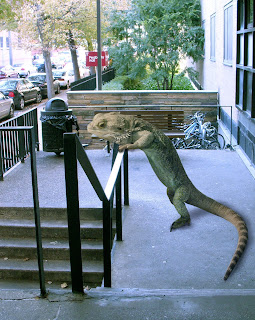The
Philadelphia Art Education Struggle
Funding art
programs decreases as teaching focus is shifted to reading and math test
scores. The number of district schools that lack an art teacher amount to 109
schools, which is 41%. More then one out of five schools have neither an art
teacher nor vocal music teacher. Because of the cut in public school funding
many schools have dropped their art programs all together. Many teachers try to
help the loss of the art programs by having in school and after school art
activities. The Philadelphia Federation of Teachers is aware of the importance
of art. They have found that is
helps children who struggle academically to stay in school and help attendance.
This way they have something they can be confident in. teachers continue to use
their own time to do projects and put on plays because they find that art is
important to the learning process.
Benefits of
Art Education for Children
Art
education develops imagination and critical thinking. It strengthens problem solving which helps with overall
academic success. Art develops a sense of craftsmanship, quality work, and goal
setting. It teaches children to articulate a vision, their vision. Art can
nurture team building skills and respecting alternative viewpoints. It also
brings about the awareness of different cultures and traditions. It plays a
central roll in cognitive, motor, language, and social-emotional
development. Art is the most
natural vehicle for play which promotes and enhances development overall.
Adult View
on Art Education
This data is
taken from Americans for the Arts National Public Opinion survey. 91% believe
that art is vital to a well-rounded education. 95% think art teaches
intangibles such as creativity, self-expression, and individualism. 89% believe
that all schools should find the money to keep art programs alive. 96% agree
that art belongs to everyone, not just the fortunate or privileged.
Social and
Academic Impact of Art Education
Art makes it
possible for people to create themselves. Art is hard to measure, sit it is
often underestimated and undervalued. Art can help students out of “formal”
ways of approaching relationships, outcomes, and perceptions. Art draws on a
range of intelligences and learning styles helping children find their
strengths.
Art
Experiences that Promote Learning
Dance builds
motor control, body relationships, and a sense of direction. Drawing,
sculpting, and other visual arts develop spatial acuity. Group activities such
as learning dance steps or singing songs build social skills. Repeating
stories, poems, or songs strengthens memory.
Programs in
the Philadelphia Community to assist in Art Education
ArtsRising
This group
helps provide high quality art education opportunities for children in
Philadelphia. It was created in 2008 by the Philadelphia Education Fund,
Fleisher Art Memorial, and Public Citizens for Children and Youth. They offer
programs inside and outside of schools for the community. They have three core
issues: in schools to provide access to a high-quality education for every
child, in communities to celebrate out city’s thriving neighborhoods, in life
to engage young people and prepare them for success in school and beyond.
Philadelphia
Arts In Education Partnership (PAEP)
They promote
learning in and through the arts for students K-12 in southeastern PA. They
encourage excellence in art education. They believe arts are integral to the
comprehensive education of all learners. They were created in 1996 with the
initial involvement of 25 local arts and cultural institutions. They work in
Bucks, Chester, Delaware, Montgomery, and Philadelphia counties. PAEP
supported, designed, and implemented more than 1,124 residencies facilitated by
1,150 area artists for more then 16,500 students. They employ 910 teaching
artists. They have also placed artists in 350 schools. They provide daily
arts-making experiences in a record 90,000 inner-city youth.
The Village
of Arts and Humanities
They began
with the transformation of a vacant lot into an art park for neighborhood
children. They were formally incorporated in 1989. They value art as a vehicle
for creative place, building self-esteem, and engender mutual respect. They encompass
visual and performing arts as well as creativity in thinking, methodology and implementation.
They are very focused on
maintaining and restoring the local community. Their programs are designed to
grow youth and adult residents into community leaders.

















